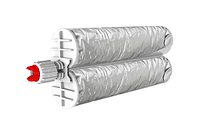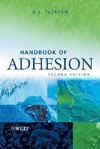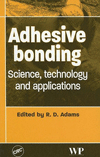DELO Reduces Global Carbon Footprint with High-Performance Shipping Containers
The savings correspond to the carbon dioxide emissions of 1,250 cars with an annual mileage of 9,321 miles.

Since 2018, DELO has saved 3,200 tons of carbon dioxide (CO2) with a new solution for shipping adhesives. This was achieved with shipping containers that work according to the thermos flask principle.
Adhesives enable lightweight design and resource-saving miniaturization. For technical reasons, many high-tech adhesives have to be transported refrigerated or frozen. Due to the required cooling capacity, frozen adhesives are to a large extent transported in Styrofoam boxes filled with dry ice.
In order to reduce its global carbon footprint, DELO has increasingly been using Cocoons units from the logistics service provider World Courier for intercontinental transports since 2018. These are special shipping containers that can be used for years and are made of a fiberglass composite and vacuum panels, among other materials. Thanks to their high-performance insulation, a significantly lower cooling capacity is sufficient compared to Styrofoam boxes, which is why reusable cold packs are used instead of dry ice. In addition, the elimination of the hazardous material dry ice (frozen CO2) makes transport easier and improves occupational safety for all employees along the transport chain.
With this new logistics solution, DELO has saved more than 3,000 tons of CO2 on its 429 shipments since 2018. This corresponds to the CO2 emissions of 1,250 cars with an annual mileage of 9,321 miles. Another advantage of the insulated container solution is less packaging material; almost 6,000 Styrofoam boxes were saved.
“Since our adhesives are used in homeopathic quantities, and given their energy-saving production, we are certainly only a minor CO2 polluter compared with the rest of the industry. Nevertheless, as part of our environmental management, we are always looking at where we can improve processes such as here in the logistics area,” explained Sabine Herold, managing partner of DELO. Most of DELO's high-tech adhesives are used in automotive and consumer electronics. In many cases, all that is needed is a small drop of adhesive. For example, one liter of adhesive is sufficient for 40 million RFID radio tags.
DELO outlined the methodology used to calculate the CO2 savings. Since calculating such savings depends on the assumptions and aspects that are considered, DELO and World Courier have been transparent about how they calculated emissions. To this end, they initially reviewed all 429 deliveries made since 2018, in which the reusable packaging was used. For these shipments, most of which went to China and Singapore, the additional weight that would have been incurred with dry ice was calculated. Weight–and not volume–is the decisive factor for kerosene consumption in air transport. The CO2 emissions of the extra weight were calculated for the respective routes using the calculator accessible at www.shipco.com/webapps/emm-calc/emission-calculator.html. In addition, DELO and World Courier have taken into account the direct emissions resulting from dry ice evaporation. Due to unavailability of data, some aspects could not be considered. These are, on the one hand, the production of the dry ice and the cooling down of the cold packs. On the other hand, it was not possible to consider the emissions caused by the production of disposable Styrofoam boxes and their disposal or recycling, or proportionately by the production of reusable Cocoon units and cool packs. Compared to the factors taken into account, however, they are much less significant.
For more information, visit www.delo-adhesives.com and www.worldcourier.com.
Looking for a reprint of this article?
From high-res PDFs to custom plaques, order your copy today!








